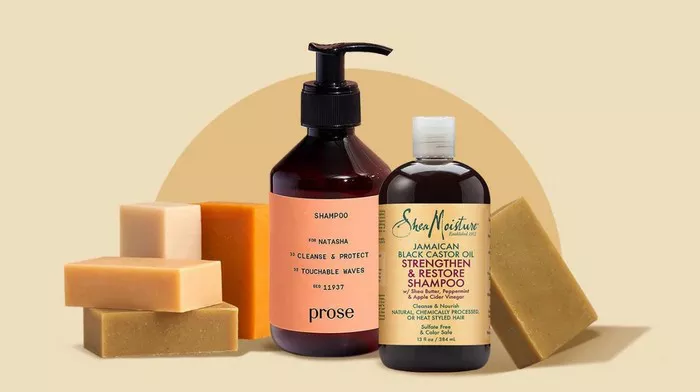When it comes to hair care, finding the sweet spot for treatment frequency is crucial for maintaining luscious locks. Many individuals grapple with the question, “How often should I treat my hair?” In this comprehensive guide, we will delve into the intricacies of hair treatment routines, shedding light on best practices for a healthy and vibrant mane.
1. Understanding Your Hair Type
Before embarking on a hair treatment regimen, it’s imperative to understand your hair type. Different hair types require varying levels of care. Here’s a breakdown to help you identify your hair type and tailor your treatment accordingly:
a. Straight Hair
Individuals with straight hair often produce more natural oils, making it prone to greasiness. For straight hair, a once-a-week treatment with a nourishing conditioner or a hydrating mask can suffice.
b. Wavy Hair
Wavy hair strikes a balance between straight and curly. Treat wavy hair every 7-10 days to maintain moisture without weighing it down. Look for products with lightweight formulations to accentuate the natural wave pattern.
c. Curly Hair
Curly hair tends to be drier due to its spiral structure, requiring more frequent treatments. Aim for a hydrating treatment every 5-7 days to enhance curls and combat frizz. Deep conditioning treatments can work wonders for curly hair.
d. Coily Hair
Coily hair, with its tight curls and coils, benefits from regular hydration. Treat coily hair every 3-5 days with a leave-in conditioner or a moisturizing hair mask to prevent breakage and maintain elasticity.
See Also: How to Repair Thin Damaged Hair: A Comprehensive Guide
2. The Impact of Environmental Factors
Environmental factors play a significant role in determining how often you should treat your hair. Consider the following factors to tailor your treatment frequency accordingly:
a. Climate
In humid climates, hair tends to absorb more moisture, requiring less frequent treatment. Conversely, in dry climates, the hair may become parched, necessitating more regular treatments to combat dryness and brittleness.
b. Pollution Levels
High pollution levels can lead to the accumulation of dirt and toxins on the hair, requiring more frequent cleansing and treatment. Invest in anti-pollution hair care products to shield your hair from environmental damage.
c. Lifestyle Factors
Active individuals who engage in regular physical activities may need to wash and treat their hair more often to remove sweat and prevent scalp issues. Adjust your treatment frequency based on your lifestyle.
3. Signs Your Hair Needs Treatment
Listening to your hair is crucial in determining the optimal treatment frequency. Recognize these signs that indicate your hair needs some extra care:
a. Dryness and Frizz
If your hair feels dry or appears frizzy, it’s a clear indication that it needs more moisture. Increase the frequency of your treatments to restore hydration.
b. Split Ends
Split ends are a telltale sign of damaged hair. Regular treatments help in preventing and repairing split ends, promoting healthier hair growth.
c. Lack of Shine
Healthy hair exudes shine. If your hair looks dull and lacks luster, it’s time to ramp up your treatment routine to restore its natural radiance.
4. Professional Advice and Consultation
When in doubt, seek the guidance of a professional hairstylist or dermatologist. They can assess your hair’s specific needs and provide personalized recommendations based on your hair type, lifestyle, and any underlying issues.
a. Regular Hair Check-ups
Schedule regular check-ups with your hairstylist to assess the condition of your hair and receive expert advice on the most effective treatments for your unique needs.
b. Product Recommendations
Professionals can recommend specific products tailored to your hair type and concerns, ensuring you invest in treatments that yield optimal results.
5. DIY Hair Treatments for At-Home Care
In addition to salon treatments, incorporating DIY hair treatments at home can contribute to overall hair health. Consider these at-home remedies:
a. Coconut Oil Mask
Coconut oil is renowned for its moisturizing properties. Apply a coconut oil mask once a week to nourish and strengthen your hair.
b. Avocado and Honey Treatment
Create a natural hair mask using mashed avocado and honey. This combination provides deep conditioning and adds shine to your locks.
c. Aloe Vera Scalp Treatment
For a soothing scalp treatment, apply aloe vera gel directly to your scalp. Aloe vera helps in reducing inflammation and promoting a healthy scalp.
6. The Importance of Consistency
Consistency is key when it comes to hair treatments. Establish a routine that aligns with your hair type, lifestyle, and environmental factors, and stick to it. Regular and consistent care will yield the best results, ensuring your hair remains healthy, vibrant, and resilient.
In conclusion
The frequency of treating your hair depends on various factors, including your hair type, environmental conditions, and lifestyle. By understanding your unique needs and paying attention to your hair’s signals, you can create a tailored treatment routine that promotes optimal hair health. Remember, a healthy hair care routine is not a one-size-fits-all approach; it’s about finding what works best for you and your beautiful mane.


